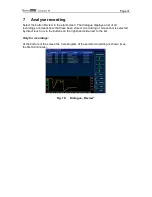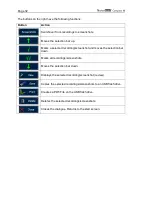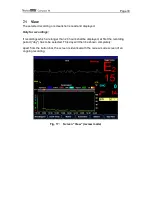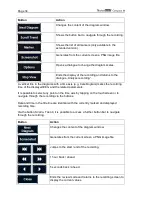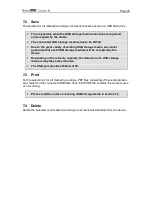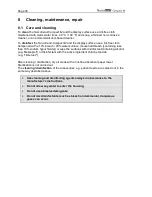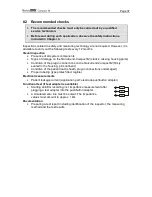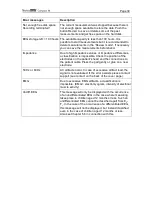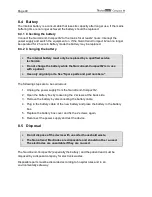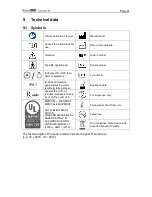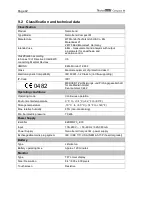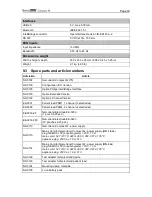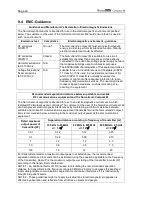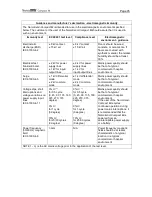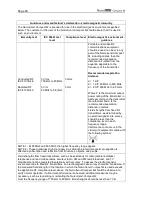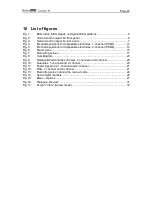
Page 44
9.4 EMC-Guidance
Guidance and Manufacturer’s Declaration - Electromagnetic Emissions
The Narcotrend-Compact M is intended for use in the electromagnetic environment specified
below. The customer or the user of the Narcotrend-Compact M should ensure that it is used in
such an environment.
Emissions test
Compliance
Electromagnetic environment - guidance
RF emissions
CISPR 11
Group 1
The Narcotrend-Compact M must emit electromagnetic
energy in order to perform its intended function. Nearby
electronic equipment could be affected.
RF emissions
CISPR 11
Class A
The Narcotrend-Compact M is suitable for use in all
establishments other than domestic and those directly
connected to the public low-voltage power supply network
that supplies buildings used for domestic purposes.
The EMISSIONS characteristics of this equipment make it
suitable for use in industrial areas and hospitals (CISPR
11 class A). If it is used in a residential environment (for
which CISPR 11 class B is normally required) this
equipment might not offer adequate protection to radio-
frequency communication services. The user might need
to take mitigation measures, such as relocating or re-
orienting the equipment.
Harmonic emissions
IEC 61000-3-2
N/A
Voltage fluctuations/
flicker emissions
IEC 61000-3-3
N/A
Recommended separation distances between portable and mobile
RF communications equipment and the Narcotrend-Compact M
The Narcotrend-Compact M is intended for use in an electromagnetic environment in which
radiated RF disturbances are controlled. The customer or the user of the Narcotrend-Compact M
can help prevent electromagnetic interferences by maintaining a minimum distance between
portable and mobile RF communications equipment (transmitters) and the Narcotrend-Compact
M as recommended below, according to the maximum output power of the communications
equipment.
Rated maximum
output power of
transmitter [W]
Separation distance according to frequency of transmitter [m]
150 kHz to 80 MHz
d = 1.2
√
P
80 MHz to 800 MHz
d = 1.2
√
P
800 MHz to 2,5 GHz
d = 2.3
√
P
0.01
0.12
0.12
0.23
0.1
0.38
0.38
0.73
1
1.2
1.2
2.3
10
3.8
3.8
7.3
100
12
12
23
For transmitters rated at a maximum output power not listed above, the recommended
separation distance d in meters can be estimated using the equation applicable to the frequency
of the transmitter, where P is the maximum output power rating of the transmitter in watts (W)
according to the transmitter manufacturer.
NOTE 1 - An additional factor of 10/3 is used in calculating the recommended separation
distance for transmitters in the frequency range 80 MHz to 2,5 GHz to decrease the likelihood
that mobile/portable communications equipment could cause interference if it is inadvertently
brought into patient areas.
NOTE 2 - These guidelines might not apply in all situations. Electromagnetic propagation is
affected by absorption and reflection from structures, objects and people.


